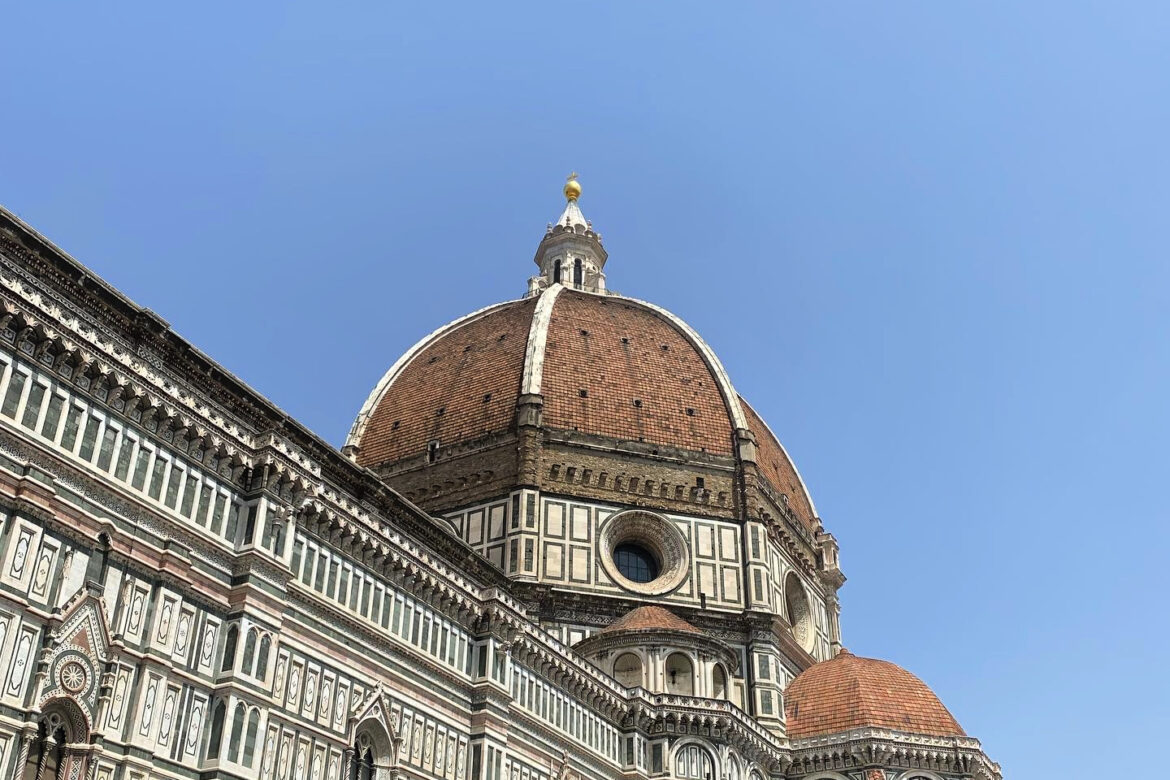
How to Make the Most of Just 24 Hours in Florence, Italy
Wondering what to do if you only have 24 Hours in Florence, Italy? While it is preferable to spend days or weeks exploring this incredible city, what if you only have one day? (Please note this post contains links that by clicking, at no cost to you, may earn me a very small commission to continue to bring this content to my readers. Grazie!)
Florence Cathedral: Cattedrale di Santa Maria del Fiore (“Il Duomo”)
The incredible Santa Maria del Fiore Cathedral is an architectural wonder. Construction began in 1296 and while the official completion was in 1496, the polychromatic façade was not completed until the 1800’s. Personally, I find it fascinating to contemplate the different styles of Cathedrals throughout Europe – the Notre Dame in Paris or the Reims Cathedral or the Duomo in Milan. Each magnificent building was completed in a unique style to the region and the Duomo in Florence is no exception with its beautiful pink, green and white exterior reflecting the sunny, Tuscan climate.
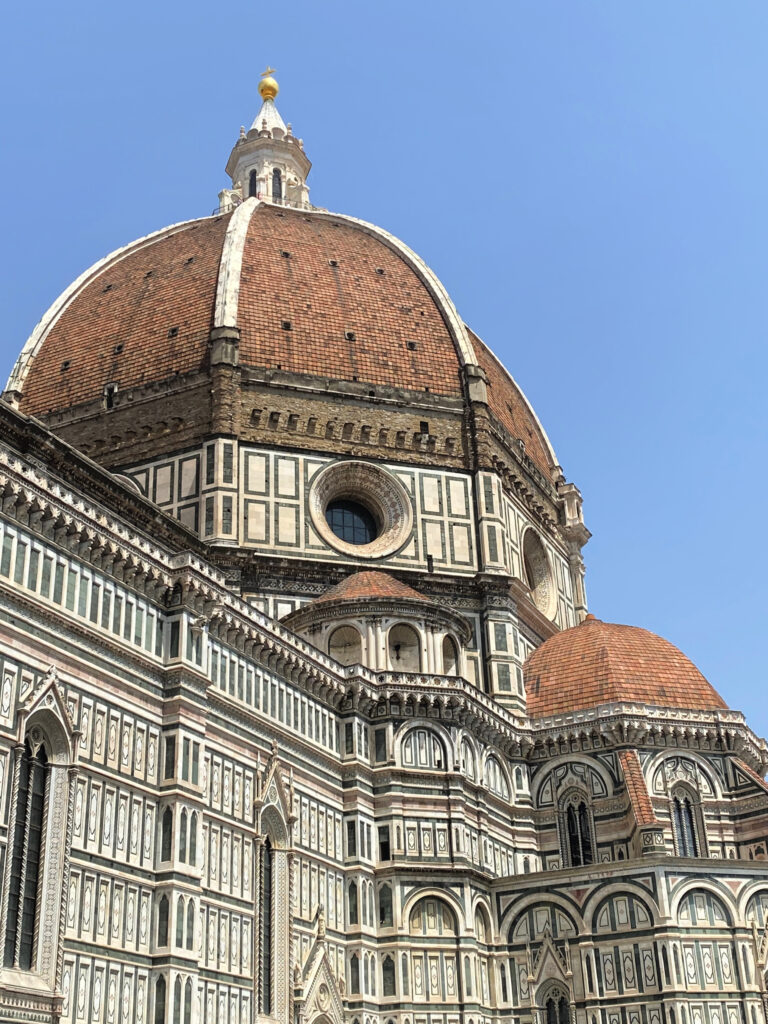
The Father of Renaissance Architecture: Filippo Brunelleschi
Of course, the main focal point of this magnificent edifice is the famous and enormous dome. The founding father of Renaissance Architecture, Filippo Brunelleschi, managed to engineer the largest masonry dome in the world at the time. The construction included more than 4 million bricks. Brunelleschi did not use the gothic buttresses that were being used in other cathedrals at the time. First, because Italian Renaissance architects felt they were ‘ugly’ and second because it was actually forbidden to use them in Florence, as they were used by their enemies to the North. (Remember, Italy did not unite into one country until the 1800’s so for much of it’s history, it was a collection of rival city-states.). Instead, Brunelleschi looked to the dome of the Pantheon in Rome for inspiration. He engineered a smaller dome inside to support the exterior dome. In true Renaissance individual style, Brunelleschi was not even formally trained as an architect or an engineer but was a goldsmith.
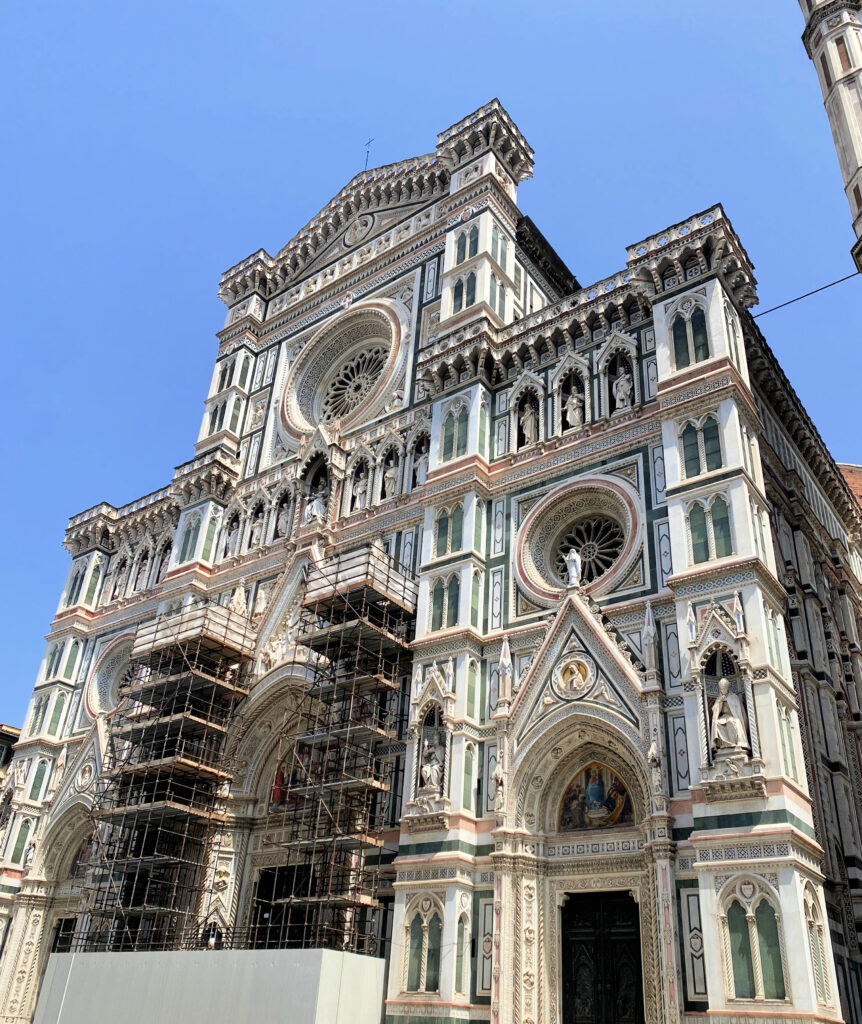
Da Vinci’s Contribution to the Cathedral
After the cathedral was formally completed in 1436, Andrea del Verrocchio, Leonardo da Vinci’s mentor, was hired to place a huge bronze ball and cross at the top of the dome. It is still unclear how, with the technology of the time, they were able to accomplish this, given the immense weight of the bronze ball and the sheer height of the cathedral. At the time, Leonardo was a young apprentice under Verrocchio, and this specific project became very inspiring to young Leonardo’s interest in engineering. Unfortunately, at one point, the ball and cross was struck by lightning and came crashing down to the floor of the cathedral.
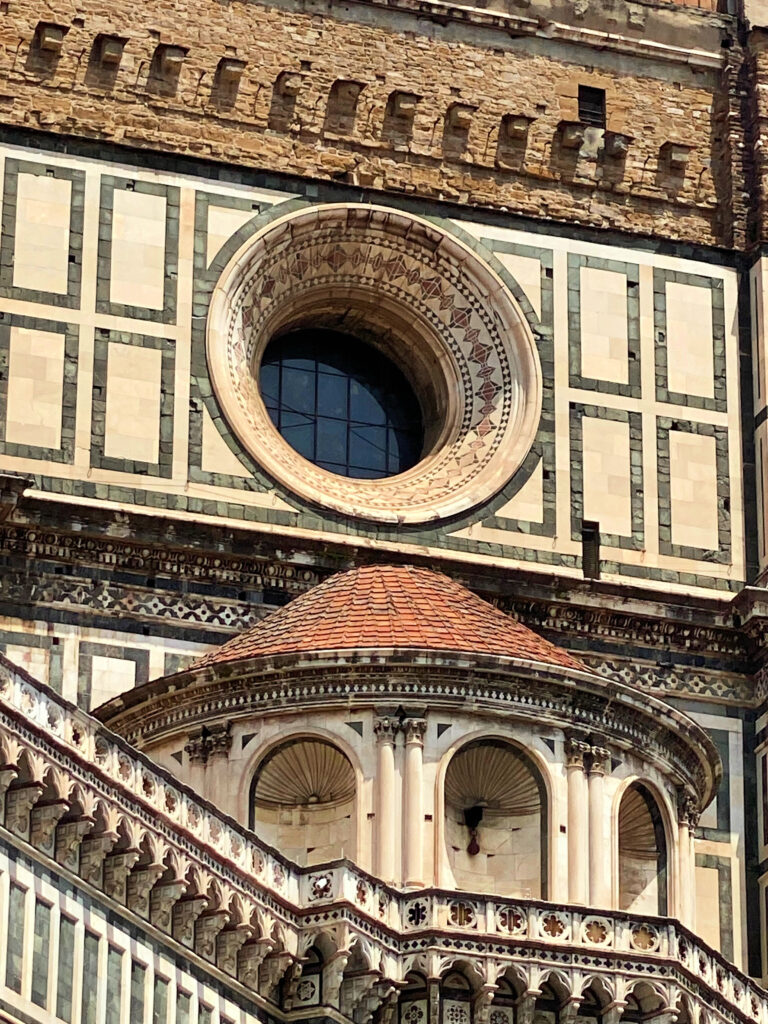
Florence Cathedral: How to Visit
There are multiple tours available depending on how much time you want to devote to this architectural wonder. Tickets of course do sell out, so make sure to book your ticket as soon as you know when you will be traveling to Florence.
Tour the Uffizi Gallery
Uffizi, which means “offices”, was originally built to consolidate the administration of the formidable Cosimo di’Medici. The art gallery today entirely occupies the first and second floors of the large building constructed between 1560 and 1580 and designed by Giorgio Vasari.
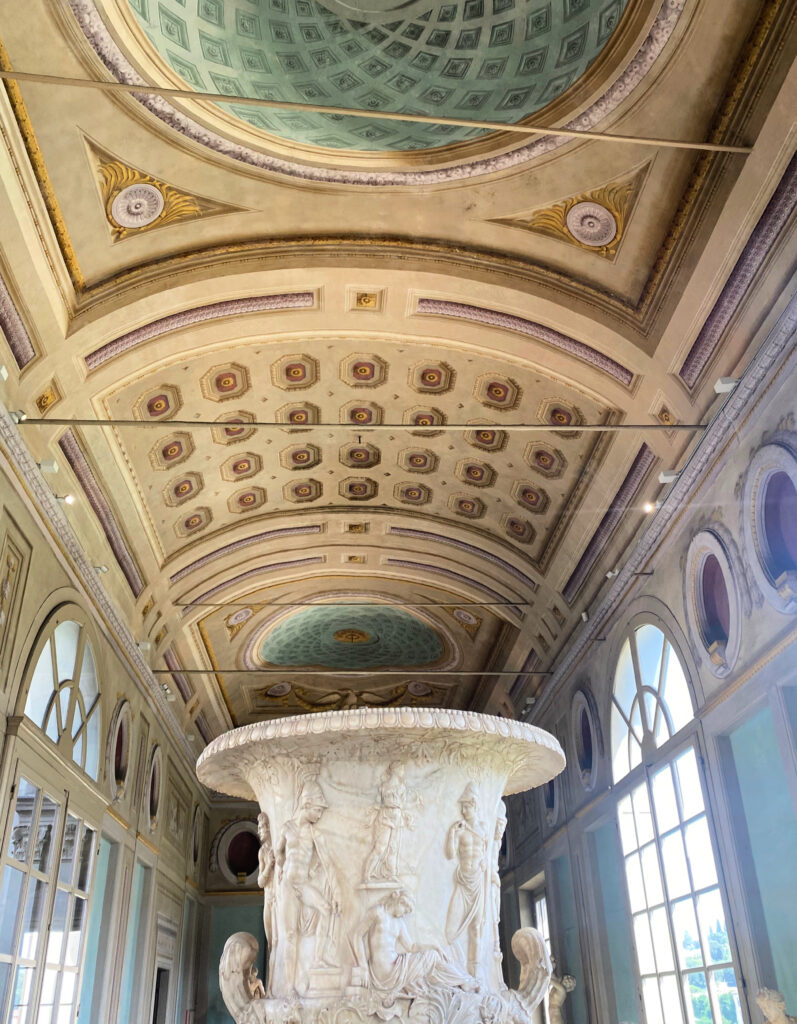
I will be writing a much more in-depth post on this incredible museum but needless to say, you must carve out just a couple hours if you can for the Uffizi. I previously taught AP European History, so walking into the Uffizi was like walking into my textbook. The amount of famous works from the Middle Ages to the Renaissance to the Modern Period is mind-boggling – Giotto, Piero della Francesca, Michelangelo, Leonardo da Vinci, Raphael, Caravaggio, Filippo Lippi, Botticelli and so many more. Plus, non-Italian art like German, Dutch and Flemish masters of the Northern Renaissance. Finally, the architecture of the space is incredible with long beautiful carved corridors, intricately painted ceilings, statues, and more.
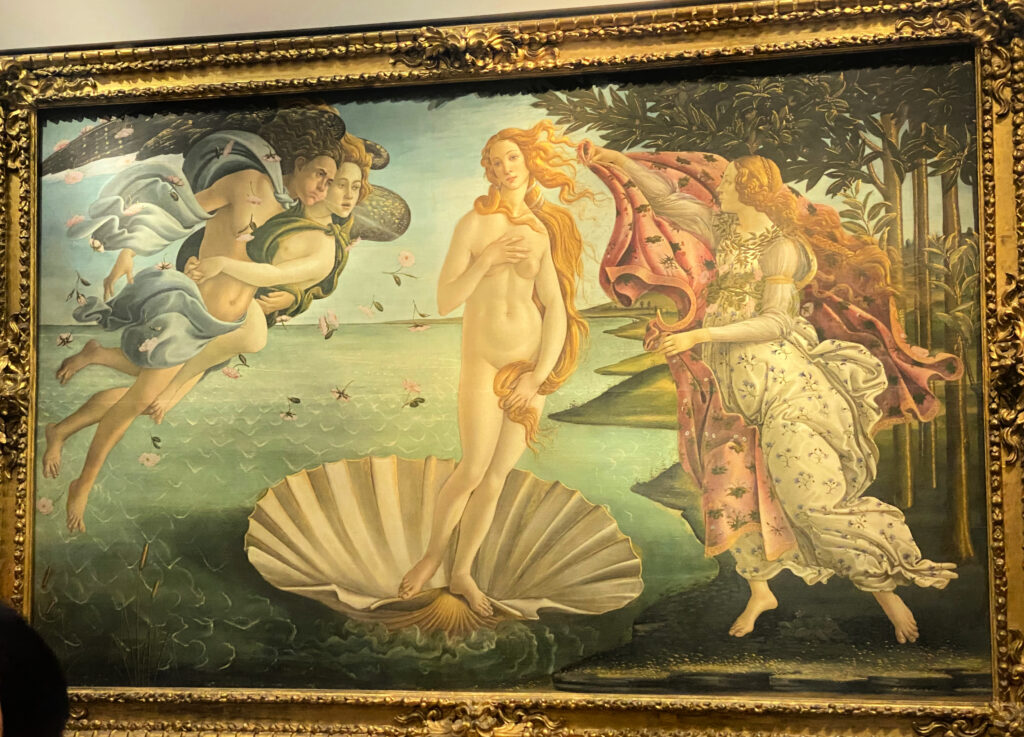
I highly recommend booking a tour guide, who can help you move through the crowded galleries efficiently plus provide knowledgeable information about the works of art. Qualified guides in Italy have years of Art History training.
The Palazzo Pitti (Pitti Palace)
On the south side of the river Arno, the enormous Renaissance Pitti Place looms, once home to the wealthy Pitti family. Of course, being Florence, the Medici family purchased the palace and turned it into their primary residence.
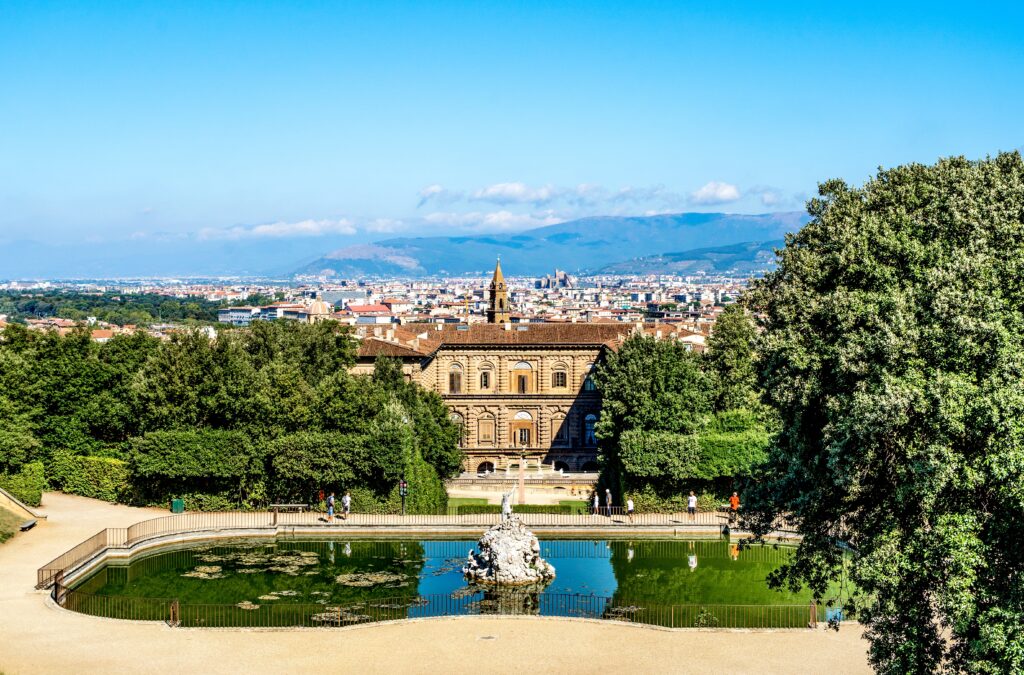
This is a must see, especially if you are not able to visit the Uffizi, as the art collection is astonishing with masterpieces by Raphael, Titian, Rubens and the “Gallery of Modern Art” with works from the 18th and 19th century. There are the renowned Boboli Gardens, with sculptures, fountains and views of Florence. Visitors can also tour the royal apartments to see how the Medici lived. Finally, there is a porcelain museum with intricate, delicate porcelain pieces on display.
French connection: Napoleon Napoleon used the Pitti Palace as his headquarters during his Italian campaign.
How to Visit the Palazzo Pitti:
You can buy individual tickets for various parts of the palace or you can plan on spending the day with a combined ticket.
Basilica di Santa Croce
Known as the “Temple of Italian Glories”, Santa Croce (Holy Cross) is one of the most famous churches in Florence, not only because of the magnificent façade but also due to its list of renowned Italians buried there, including Michelangelo, Galileo, and Machiavelli.
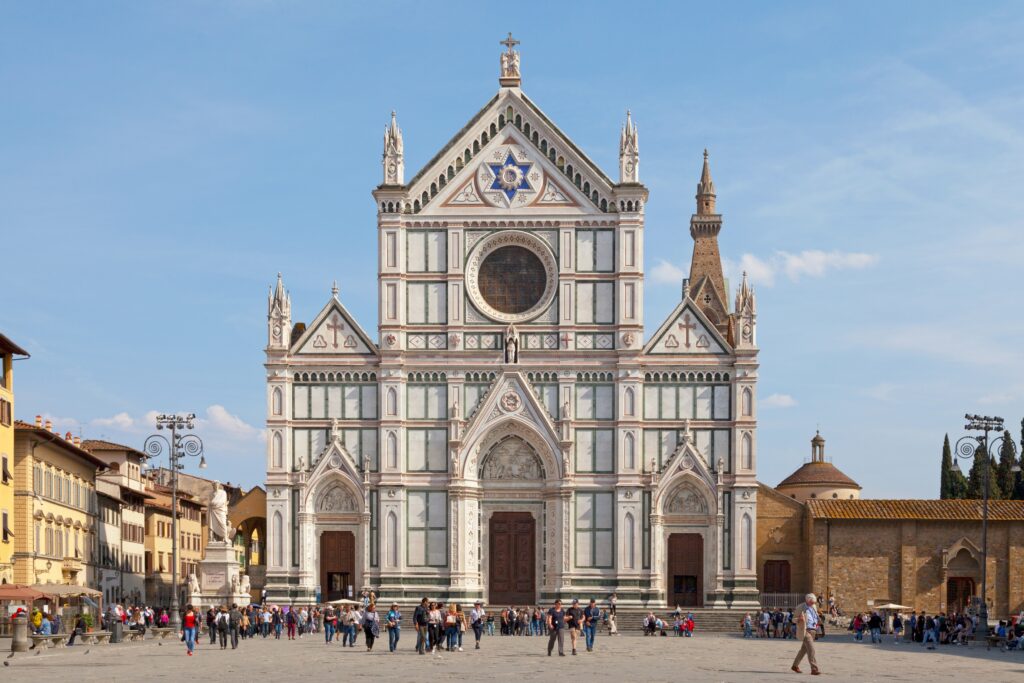
Not only is Michaelangelo buried there, but his tomb was designed by Giorgio Vasari, an incredible architect in his own right. Also buried there is Galileo, but only after the Catholic Church lifted its ban on honoring him. The walls are adorned with frescoes by the famous early Renaissance artist Giotto and his students. In the Pazzi Chapel, designed by Brunelleschi (the architect of the dome above!), the Pazzi Chapel is a stunning example of Renaissance architecture. Finally, the museum and cloisters are a lovely, serene stroll through art, architecture and a hint of religious life which tend to be quieter than the bustle of some of the other busy Florence attractions.
Go on a Food Tour
We started our day in Florence on a delicious food tour, which I highly recommend. Our 3 hour tour with a local guide began at one of the main markets of Florence. First, we meandered through the outdoor market and since it was summer, the stands were full of delicious, fresh and vibrantly colored fruits and vegetables.
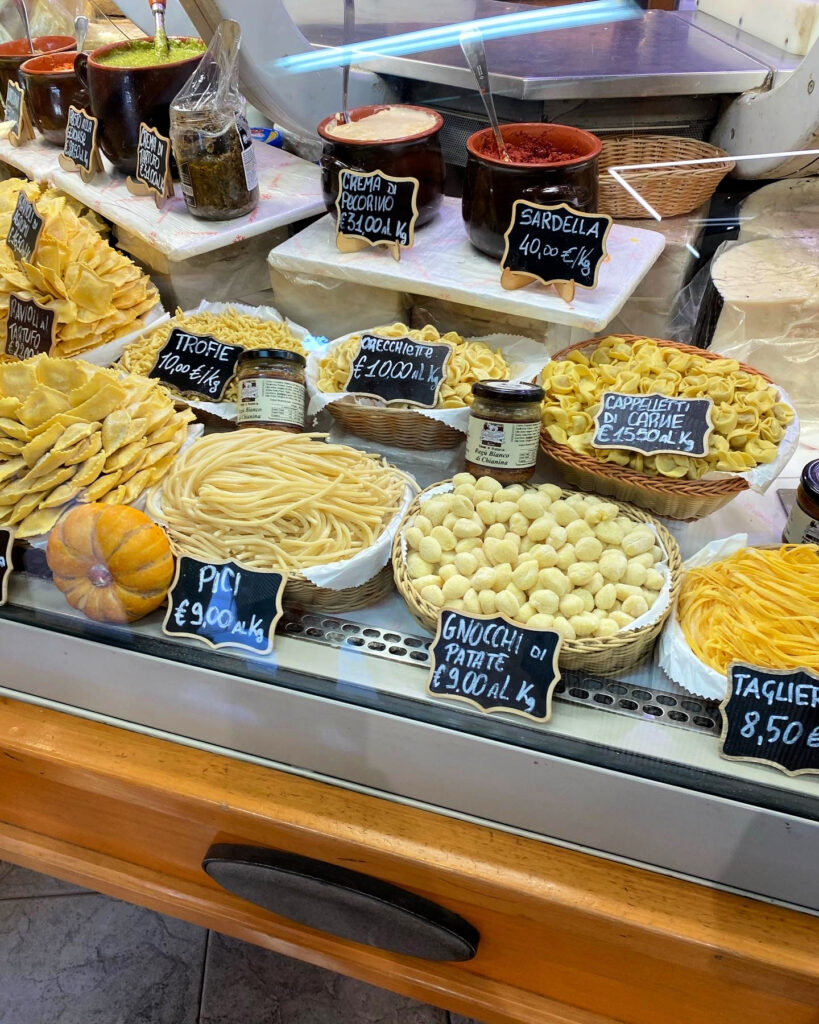
Next, we went inside to the covered market and had a chance to sample a variety of Tuscan specialties like fried bread, local cheeses, meats and olives. We left the market area into the charming streets of Florence and stopped in a typical enotecca for some local wine tasting and tasty appetizers like bruschetta. To top it off, we stopped off at the famous “Leonardo” bakery for fresh out of the oven baked goods.
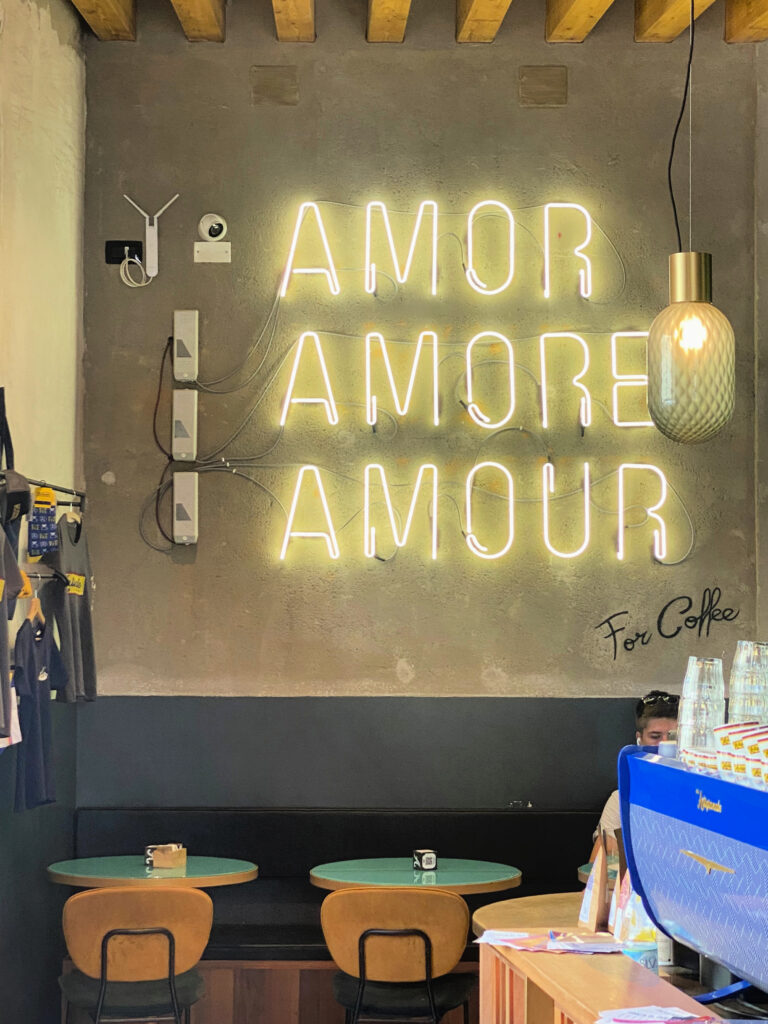
Finally, we needed to revive our energy with coffee at a very charming cafe. After all of this, we headed to the center of Florence for the art and architecture portion of our day.
Watch the tour here on my YouTube Channel:
Food Tour Recommendation:
I could easily recommend so many different food tours but I cannot recommend enough www.bonartulia.com
She is a true Florentine local and a total professional. You will not be disappointed! Just tell her that gscinparis sent you!
Tour the Medieval and Renaissance Architecture of the Center of Florence
While we made our way from the food tour over to the Uffizi, we wound through the old streets of Florence, marveling at the architecture and the history. At one point, our guide pointed out the home of Dante Alighieri, the Italian writer, poet, philosopher and author of the Divine Comedy. While most other writers were writing in Latin, he was one of the first to use the local Florentine vernacular and thus helped establish the modern day Italian language (which I am trying to learn via DuoLingo!).
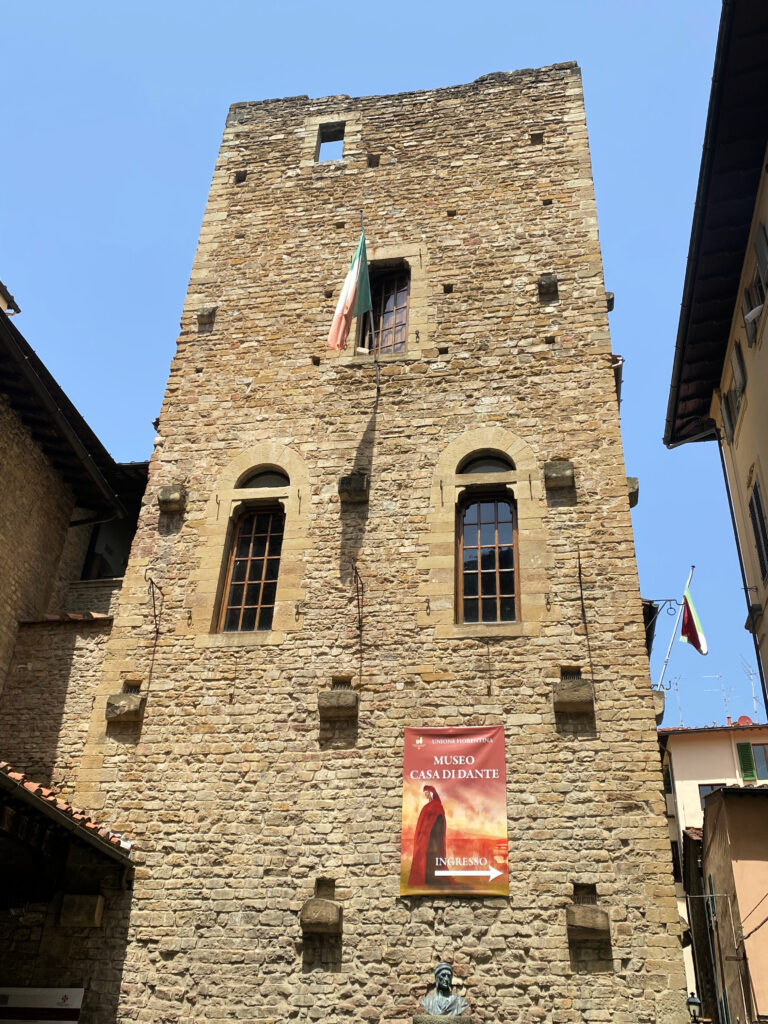
Also, you will see the medieval architecture in various buildings – for security, the “door” to buildings would be located a story or two off the ground and could only be accessed by a ladder which would be pulled up at night.
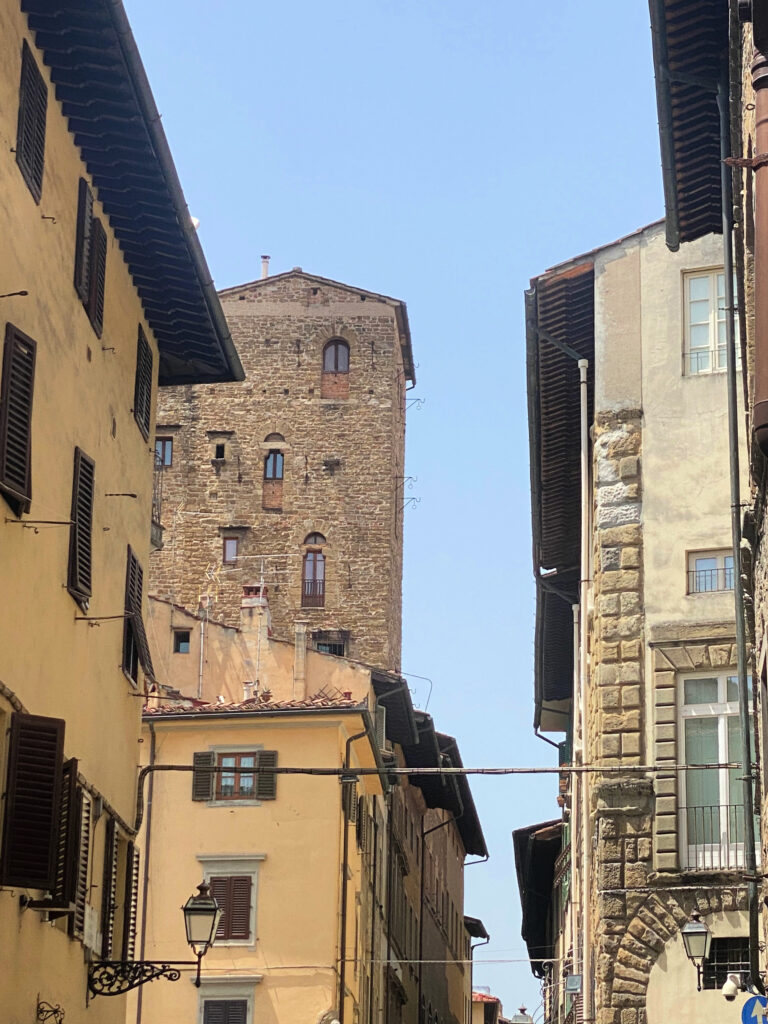
Walk Across the Ponte Vecchio
The Ponte Vecchio (the “Old Bridge”) is a medieval bridge connecting the two sides of Florence across the Arno River. The bridge dates back to Roman Times and has survived floods, wars and thousands of years of wear and tear. Shops line the bridge, as was common in medieval times. At first, the bridge was populated by fishmongers, butchers and tanners. Over time, goldsmiths and jewelers replaced them as Florence grew in wealth and prosperity and became known for its fine gold jewelry.
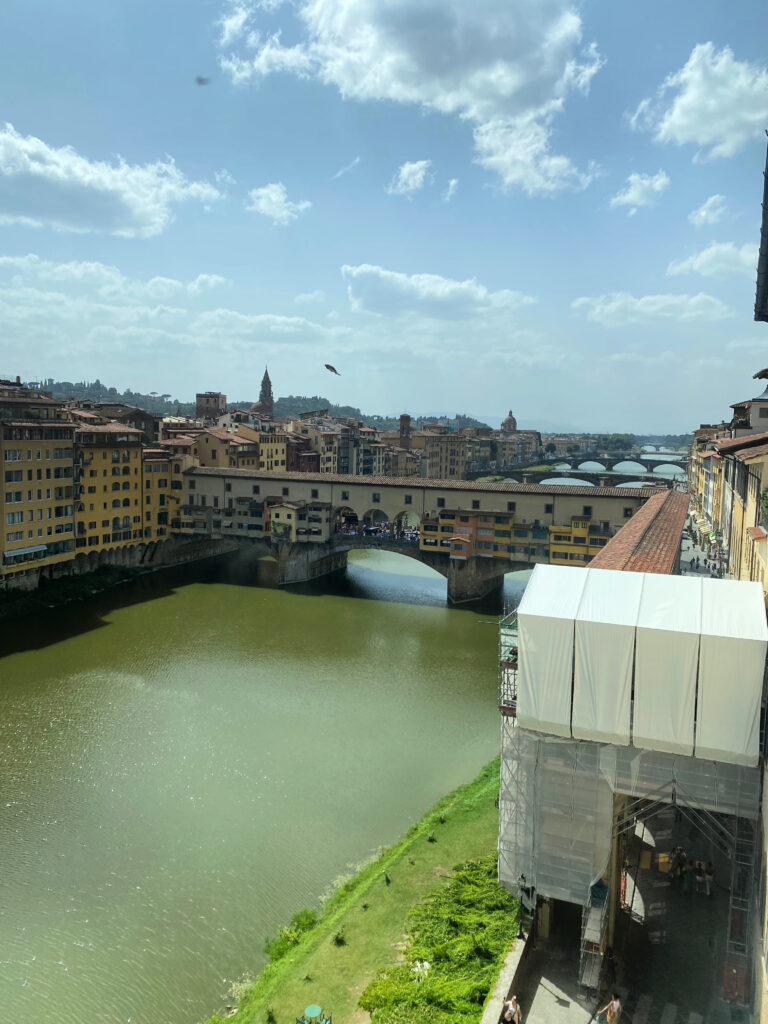
It was the only bridge in Florence to survive the bombing of World War II. While you are visiting the Uffizi, there is a lovely view of the bridge, be sure to stop and take in the view. Nowadays, there are also gelato vendors and souvenir shops and thousands of tourists. If you go early enough in the day, you might actually get to enjoy the stroll.
Visit Santa Maria Novella Church
For architect lovers, be sure to visit this famous Renaissance basilica. And if you are an architect, you no doubt spent some time studying this quintessential example of Renaissance architecture.
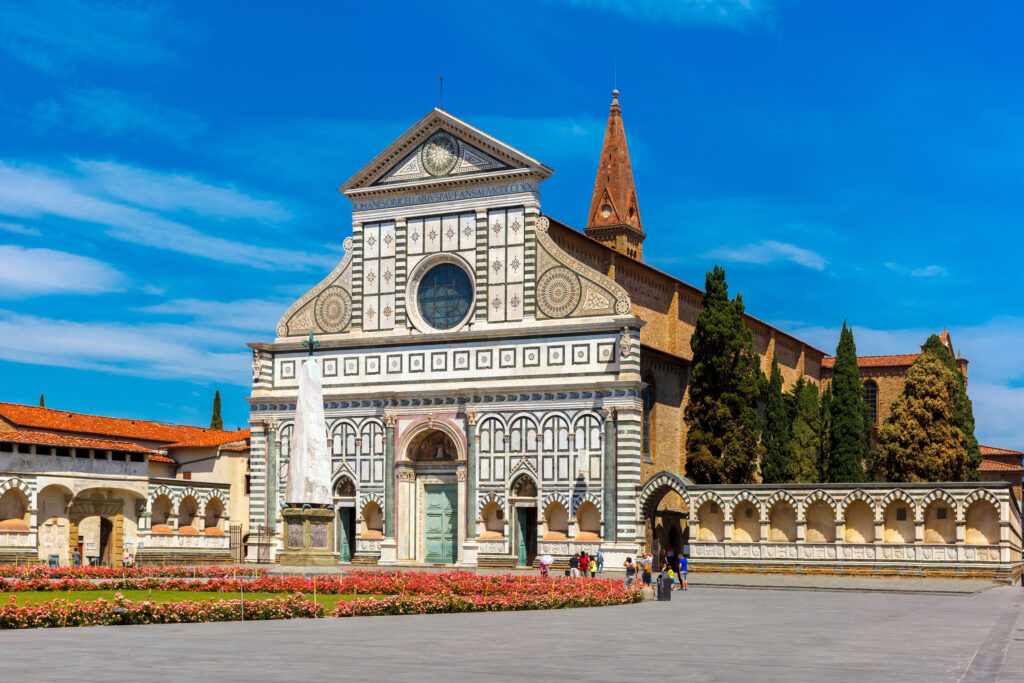
Leon Battista Alberti designed much of the church. Having authored the famous De re aedificatoria, published in 1485, and inspired by the Roman architect Vitruvius, the book became a major reference for architects (I have a copy in my library). In the church, he brought he ideals of humanist architecture, proportion and classically inspired detailing to the design. Many other artists and architects had a hand in the design, including Brunelleschi in the design of the crucifix and the famous Renaissance artist Filippino Lippi, who painted the frescoes and created some of the stained glass windows.
Address: P.za di Santa Maria Novella, 18, 50123 Firenze FI, Italy
Visitor Information: Santa Maria Novella
Is 24 Hours Enough Time to See Florence?
No. To my regular readers, je vous aime and ti amo, I know. 24 Hours is not enough. But for many people, 24 might be all one can do and I have tried to highlight the absolute musts here.
Where to Stay in Florence, Italy
Stella d’Italia
Firenze is not short on elegant hotels and yet the Stella d’Italia shines like a star. The location is exceptional as it resides in a 16th-century palazzo designed by Renaissance architect Giorgio Vasari. Just off the beautiful Via Tornabuoni, guests are just a short walk from the Duomo. The design is stunning, the creative masterpiece of a husband and wife duo. Original paintings, eclectic art objects, old film posters and charming antiques from local flea markets make the interior design truly one of a kind.
Some of the rooms include 18th-century frescoes or perhaps an outdoor terrace with a view of the iconic red rooftops. Guests can enjoy the hearty Tuscan breakfast buffet in the frescoed breakfast room or enjoy aperitivi in the cocktail bar in the evening.
Address: Via de Tornabuoni, 7, Florence, Italy (Santa Maria Novella)
Readers’ Choice – Hotel Lungarno
Wow, I am so impressed with my readers. You all have amazing style. My readers really stepped up and let me know about a fantastic option. I did quite a bit of research and when I found out it was rated an SMH, I was smitten. Stylish and elegant, as only the Florentines can, the Hotel Lungarno sits proudly on the south side of the Arno River with views of the Ponte Vecchio. While there are many dining options in Florence, the hotel has its own wonderful restaurant and classy bar. And – if you know me, you know how much I love a wonderful art hotel – the Lungarno has an incredible collection of original 20th century works of art, including works by Picasso and Cocteau!
Other Hotel Options in Florence, Italy
Here is an array of options located around il Duomo and the Uffizi:
How to Get to Florence?
Like all the great European cities, Florence is easy to access by plane, train or car. As I mentioned, we drove as were were staying on the coast of Tuscany. It was about a 1.5 hour drive from the Forte dei Marmi area to Florence. There are tolls along the way but you can pay by credit card. We found parking on the street and there are parking garages as well. Rome is about three hours away by car and Milan is about four hours drive.
If you are flying to Florence, the airport is Aeroporto di Firenze-Peretola (FLR). The airport is only 10 minutes from the city by car/taxi/uber without traffic. There is also a tram available that takes about 22 minutes.
Finally, many people choose to travel by train for the convenience and cost. Rome to Florence by train is about a 1hour and 35 minute ride while Milan to Florence is about 2 hours. Venice to Florence is about 2 hours 15 minutes.
Many European cities, including Florence, offer self luggage storage so you can safely store your bags while you wander about for the day.
Prefer a Home Away from Home in Tuscany?
It’s hard to decide which is better – the exquisite hospitality of Italian hotels or the beauty of staying in an home or an apartment. I have used both VRBO and Plum Guide several times and I highly recommend these services for a hassle free vacation rental.
VRBO
Whenever I have used VRBO in Italy, the units are impeccably clean and stylishly furnished with great locations.
Plum Guide
I have partnered with “Plum Guide”, which offers homes and apartments for vacation rentals with “thoughtful design, with something remarkable, impeccably clean and well-maintained spaces, attentive hosts who are responsive and respectful”. In order to use my preferred rate, you would have to contact me.
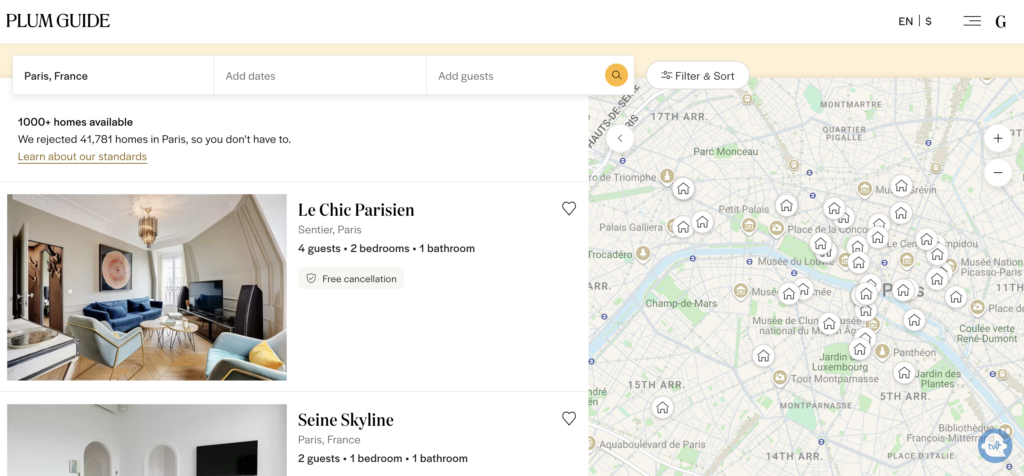
Need a Flight?
Need a Ride to/from the Airport?
Welcome Pickups is a reliable airport transer service that does operate in Nice, France.
What to Wear:
Head to my Shop Page or follow my Like To Know page for Parisian inspired fashion and more.
If You Enjoyed this Post, You Might Also Enjoy:
More Italy:
The 3 Must-See Towns along Italy’s Amalfi Coast
More Europe:
24 Hours in Geneva, Switzerland
The Vienna Secession Building and Gustav Klimt’s “Beethoven Frieze”
The Beautiful Architecture of Prague
More France:
6 Places in France to Escape After the Paris Olympics
Fabulous Books to Bring France and Italy to Your Home
Le Mont-Saint-Michel: Natural and Man made Wonder
Discovering the Enchanting Hilltop Village of Èze, France
La Fondation Maeght: Art and Architecture in the South of France
A Perfect Day in Saint-Émilion, France
Touring France: Le Bassin d’Arcachon
More Paris:
The Ultimate 3-Day Paris Itinerary: Must-See Highlights for First-Time Visitors
The Best Covered Passages in Paris: Architecture, Shopping, and History
6 Beautiful Paris Hotels for Your Next Trip to Paris
5 Hidden Gems in Paris for Architecture Lovers
7 Restaurants to try for your next trip to Paris
5 Must Read Books for Your Trip to Paris
Notre Dame de Paris: How a Building Can Break Our Heart
Passionate about Paris’ Fondation Louis Vuitton: a ‘Magnificent Vessel’
Be sure to follow my Instagram to see where I have been and where I am going.
Bring France & Italy Home
You can shop my Amazon shop with a selection of French and Italian inspired items.
Shop here for French items.
Or, shop here for French books.
Browse here for Italy inspired books and items!
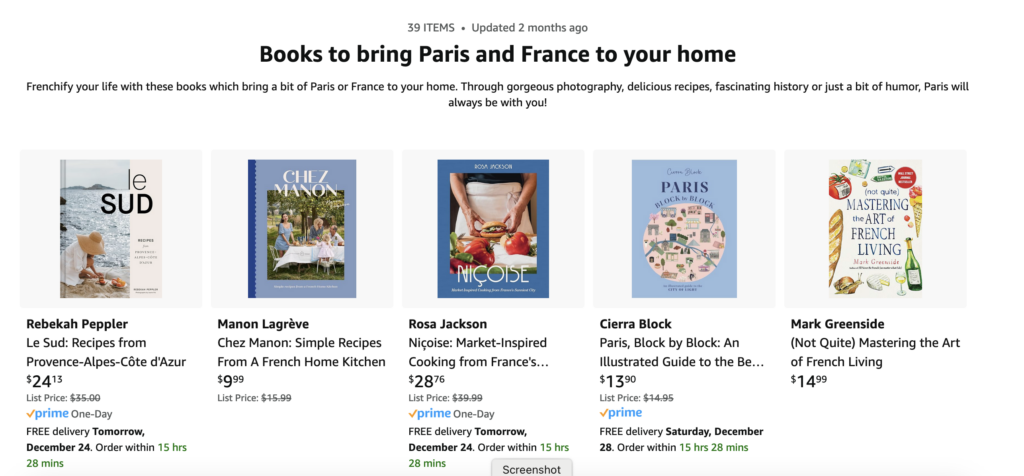
Ready to Book a Trip or Get More Information?
See my Travel Advisor Profile here.


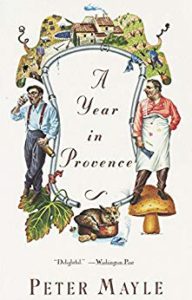
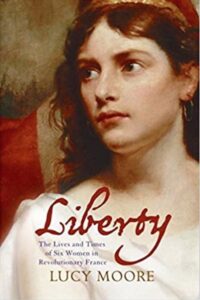
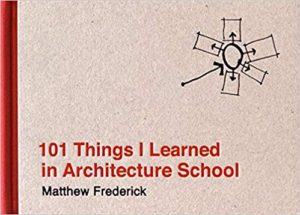
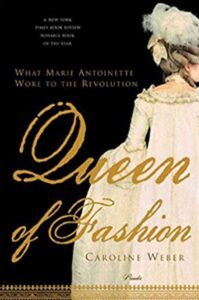
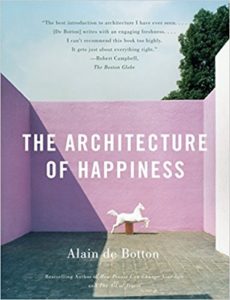

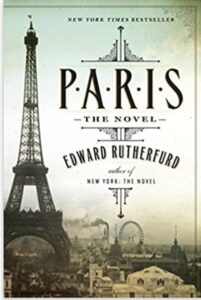
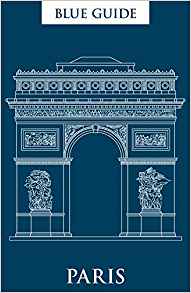
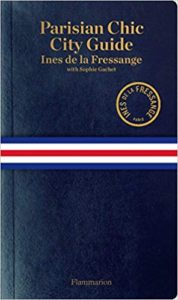
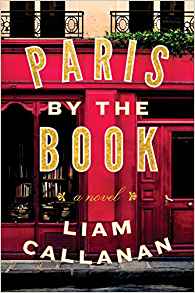
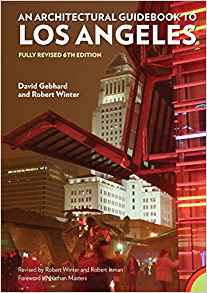
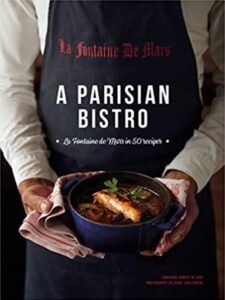
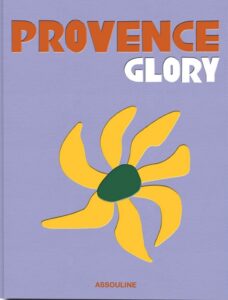
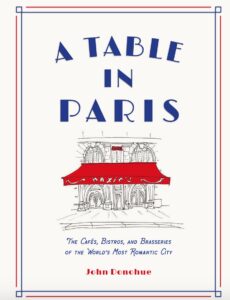

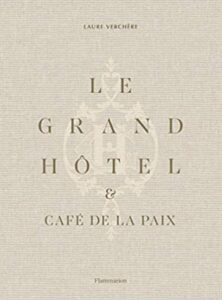
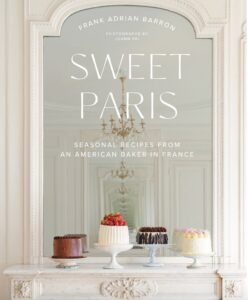
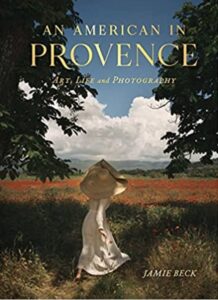
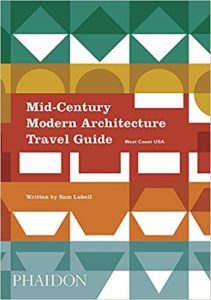
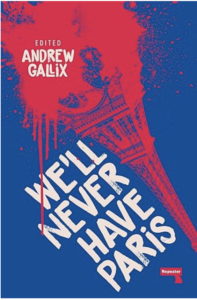
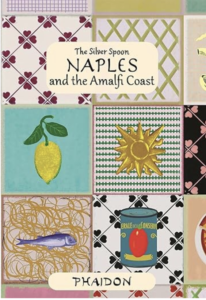
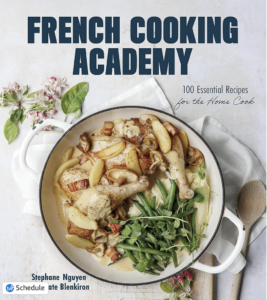
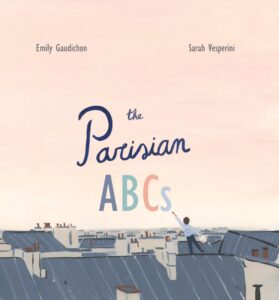
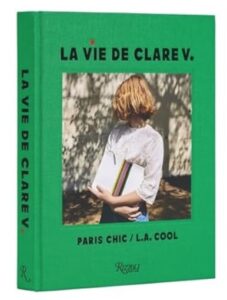
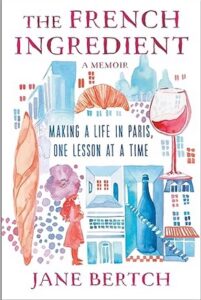
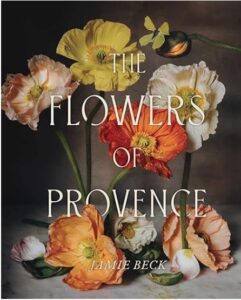

Leave a Reply